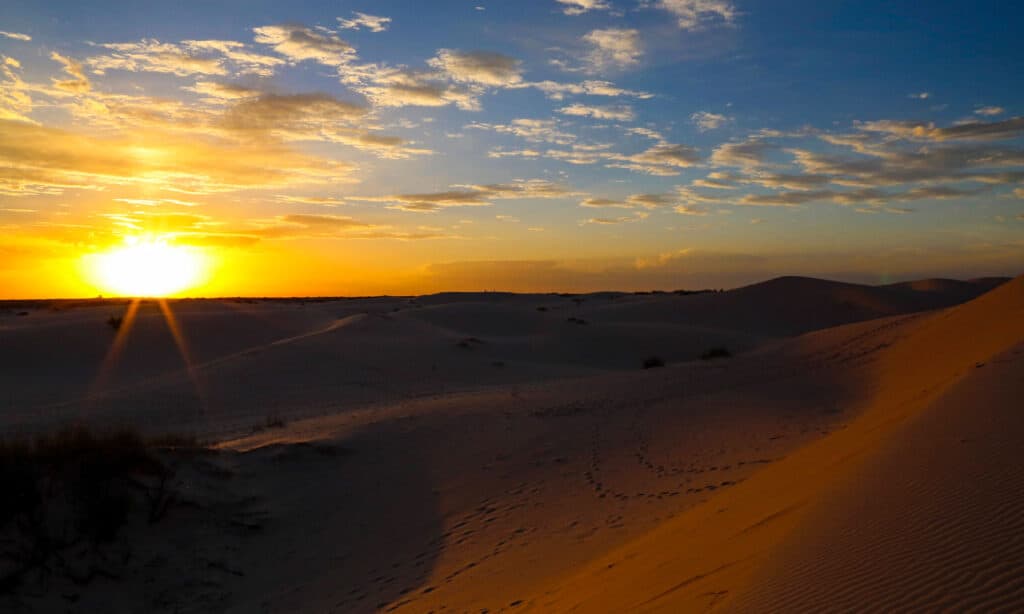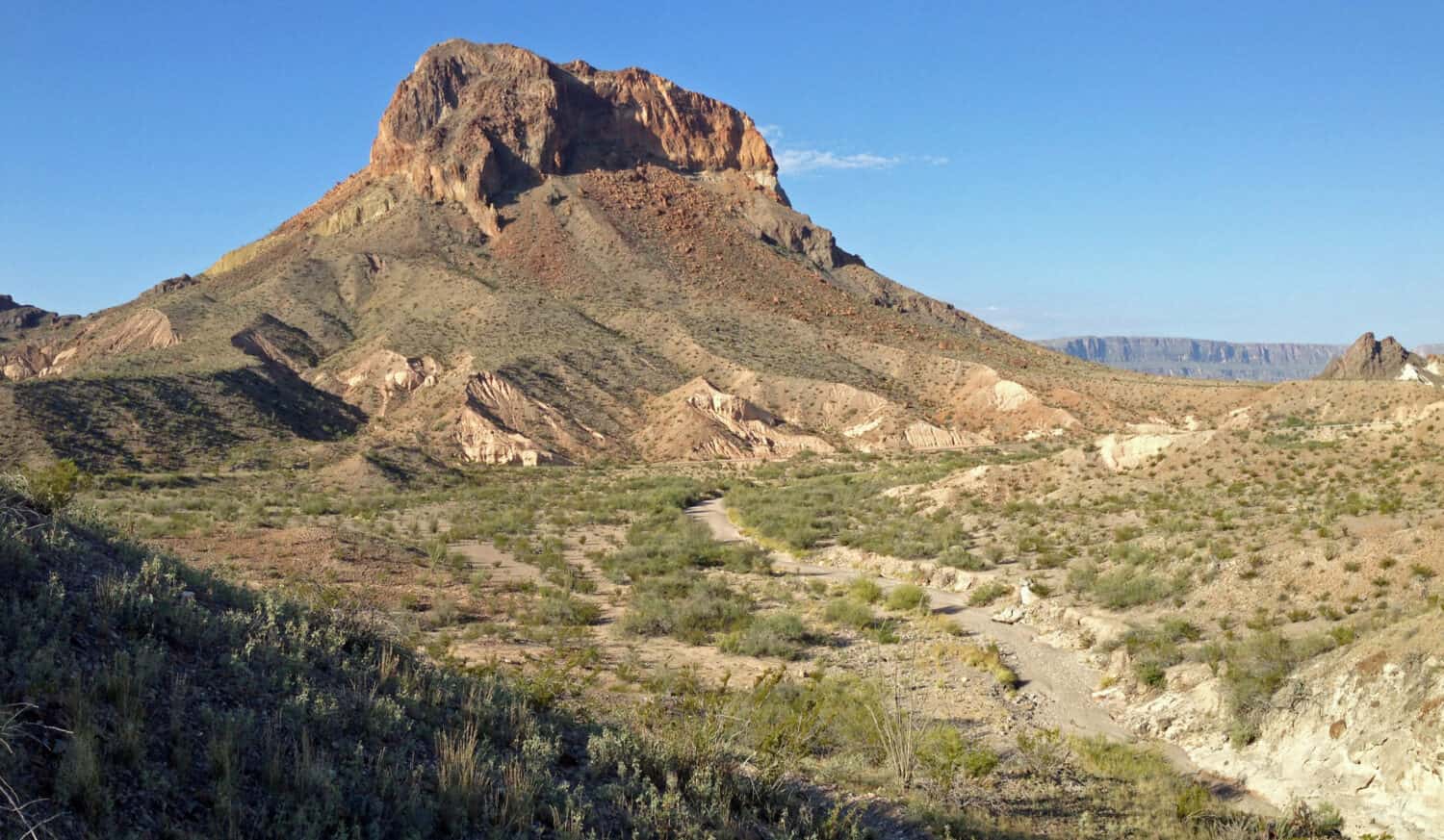Texas experiences some very hot temperatures throughout the state. Yet, the western part of the state is more susceptible to extreme temperatures because the climate is hotter and drier in that area. Today, we are going to look at the hottest temperature ever recorded in Texas and show you the state’s record, where it occurred, and how it compares to the hottest temperatures in the entire country.
Texas’s Climate

Texas is largely a humid subtropical climate, but hotter, drier climates exist too.
©Sean Pavone/Shutterstock.com
The climate in Texas has five general areas based on the Köppen-Geiger climate types. The eastern half of the state is considered a humid subtropical climate. Places like Houston, Dallas, and Austin fall in this area. Summers in this climate are hot, humid, and long-lasting.
The area can get severe thunderstorms, but it is somewhat dry during the hottest months. The winters are comfortable and mild, rarely getting very cold or seeing significant winter precipitation.
The western part of the state features four different types, including:
- Cold semi-arid
- Hot semi-arid
- Cold desert
- Hot desert
These parts of the state can get hotter in the summer and receive much less precipitation than other areas in the region. They’re the perfect place for record-setting temperatures to occur. The average temperatures during summer in Odessa, Texas, a hot semi-arid region, are listed in the following chart.
| Month | Average High Temperature |
|---|---|
| June | 95 °F |
| July | 94 °F |
| August | 93 °F |
| September | 86 °F |
These temperatures reflect the tremendous heat that this region experiences, but many other places in the state are even hotter than this city. Knowing the climate in this state, it is time to look at the all-time record.
What Is the Hottest Temperature Ever Recorded in Texas?

The hottest temperature ever recorded in Texas was 120 °F, occurring in Monahans.
©iStock.com/brucemaloneatx
The hottest temperature ever recorded in Texas was 120 °F, and the temperature occurred most recently in Monahans, Texas on June 28, 1994. Other places in the state have experienced the same temperature, but the record in Monahans was the most recent occurrence. Summer had barely started when this record-setting temperature broiled the city, sending people scrambling to stay cool.
The city of Monahans is in the western part of Texas in a very hot, arid region. The temperatures usually stay in the high 90s throughout the summer months. Triple-digit temperatures are not unusual in this part of the state.
Yet, June 1994 was much hotter than usual across large parts of the United States. The CDC tracked greater numbers of heat-related illnesses and deaths during this time. The temperature record has stood for several decades since the last occurrence.
Where is Monahans, Texas on a Map?
Monahans, Texas is in Ward County, Texas. This county is in a part of the state referred to as West Texas, the hottest and most arid region of the state.
The city is about 30 miles from the border with New Mexico. Interstate 20 runs through Monahans, allowing people to travel to the northeast or southwest.
To the northeast lies Odessa, roughly 35 miles if one takes Interstate 20. The city may not be as famous as Dallas or Houston, but Monahans does have the Monahans Sandhills State Park. This semi-arid region features sand dunes that measure over 50 feet tall. People travel to this area to explore the dunes and see the wildlife in the region.
The Wildlife Near Monahans

The western diamondback
rattlesnake
is one of many animal species that thrive in the region.
©iStock.com/johnaudrey
Monahans is a rather remote city. People may think that the surrounding desert-like area does not have much in the way of wildlife. However, several species of animals live near the city, even mammals. Some of the animals that live near this region include:
- Ornate box turtle
- Woodhouse’s toad
- Spotted ground squirrel
- Scaled quail
- Wild boar
- Prairie rattlesnake
- Coyote
- Cactus wren
- Western diamondback rattlesnake
- Black-tailed jackrabbit
- Mule deer
- American badger
- Lesser goldfinch
- Common side-blotched lizard
This handful of different animals shows the variety of wildlife that thrives in this region. Even though Ward County is very hot and arid throughout the summer, these animals continue to thrive in the region alongside many others.
During the hottest day ever recorded, many of these animals would have used their adaptations to survive. That may have involved staying in burrows to wait out the worst heat or not hunting for food during the day. The creatures on the list above change their behaviors to suit the environment, allowing them to survive some rather intense situations.
Comparing the Hottest Temperature in Texas to the U.S. Record

Death Valley is one of the hottest places on Earth.
©Virrage Images/Shutterstock.com
The hottest temperature ever recorded in Texas was a stifling 120 °F. While that is a blazing hot summer day, it is not the hottest record to occur in the United States. Instead, the honor of the hottest temperature ever recorded in the United States belongs to California.
On July 10, 1913, the temperature at Greenland Ranch in Death Valley reached an unbelievable 134 °F. Now called Furnace Creek, this part of Death Valley has hit temperatures up to 130 °F in recent years. Many scientists have called the record temperature into question. They claim that it is unlikely that the temperature reached that high on that day, and the individual that observed the temperature may not have properly recorded data from the on-site instruments.
Still, the hottest day in California’s history stands as the country’s record as well as the record for the hottest air temperature ever reliably taken on the planet.
The hottest temperature in Texas was incredibly warm, especially for so early in the summer. Although other days have come close to replicating that heat, none have matched or exceeded it. Although the summers of 2020 and 2021 were exceptionally hot, they did not match that one very hot day in 1994.
Thank you for reading! Have some feedback for us? Contact the AZ Animals editorial team.








